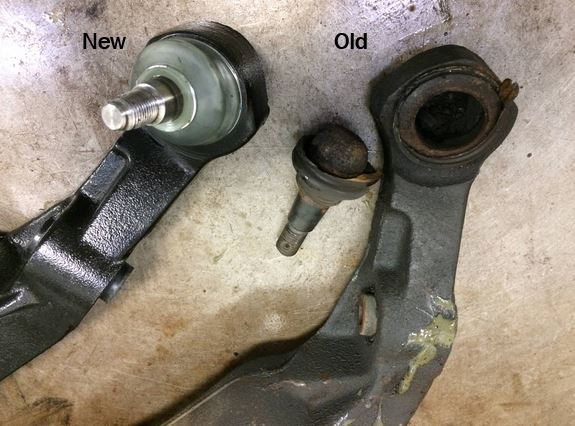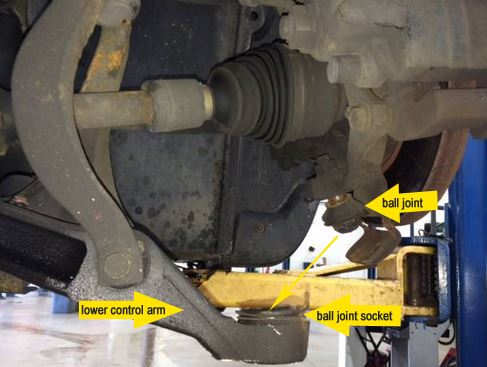When your car isn’t properly maintained a lot of things can go wrong. The other day I ran across a Facebook post that caught my eye. A fellow auto shop owner, Ken Quasney of Auto Sense, posted a picture of a ball joint that had separated from the lower control arm. In the text of the post, Auto Sense summarized this problem and its probable cause.
Then, just yesterday, we had a car in the shop with exactly the same problem!
When the ball joint becomes separated from the control arm the driver can not control the direction of the wheels because there is no longer a positive link between the wheels and the steering wheel. In fact, the wheel hub assembly could collapse!

Over the years, I have seen many vehicles, disabled by this issue, sitting alongside the road — cars with one of the wheels collapsed into the wheel well. Auto Sense suggests this is caused by very poor maintenance, particularly car owners using quick lube shops, and I agree.
It seems, in recent years, the lack of correct maintenance of vehicles has become epidemic! In a recent road trip coming back from New York, I saw several cars stopped alongside the interstate highways with similar issues:
- a truck with the drive shaft completely disconnected
- a car with the under car panels dragging on the road
- cars with flat bald tires
The list goes on and on, but what about the cars we don’t see — the ones in accidents that could have been avoided with a bit of proper maintenance?
A contributing factor to these types of problems is drivers simply ignoring the warning signs. Our vehicles send several “signals” to us that there is a problem, and sometimes we ignore those signals.
- Before a ball joint fails, the steering becomes terrible, and a loud noise can be heard coming from the suspension and steering.
- Before the drive shaft falls off the driver would have to ignore a vibration and a loud clunking from the drive line for months.
- Before a bald tire goes flat the steering and brakes perform badly, especially on wet roads.
- Before the underside panels fall off completely, they become more visible under the car and can be easily noticed by a technician months before.
Unfortunately, sometimes the issue isn’t the car owner just overlooking the warning signs. One of the more frustrating things we come across are instances where the lack of maintenance is not the car owner’s fault. Some car owners actually do spend money maintaining their car, it’s just that they have been persuaded to purchase “services that could wait” rather than addressing the safety issues first!
Safety should always come first — not air filters, not fluid changes, not questionable fuel injection services! When you take your car in for servicing at a quick lube that doesn’t perform a complete range of auto services, they may focus on recommending services that they actually perform rather than the services required for auto safety or wheel safety.
As Auto Sense suggests in their Facebook post, use a service facility that employs certified technicians. When you do, those certified technicians will put your safety first. They are trained to do exactly that!
Are you due for a preventive maintenance visit. Schedule one with a shop that employs ASE certified technicians. If you’re in the Baltimore/D.C. metro area, check out British American Auto Care.






